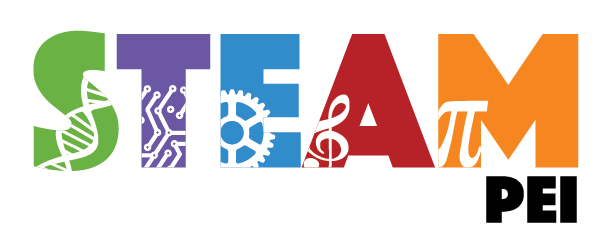LdapTools 



LdapTools is a feature-rich LDAP library for PHP 5.6+. It was designed to be customizable for use with pretty much any directory service, but contains default attribute converters and schemas for Active Directory and OpenLDAP.
A fluent and easy to understand syntax for generating LDAP queries. Easily create/modify/delete/restore common LDAP objects (Users, Groups, Contacts, Computers, OUs). Retrieve LDAP objects as either a simple array or an object with automagic setters/getters. A logging mechanism for all LDAP operations An event system for further customization, extensibility, and integration. Parse and create LDIF files. View and modify Active Directory permissions.Installation
The recommended way to install LdapTools is using Composer:
composer require ldaptools/ldaptools
Getting Started
The easiest way to get started is by creating a YAML config file. See the example config file for basic usage. See the configuration file reference doc for a list of all available options.
Once you have a configuration file defined, you can get up and running by doing the following:
use LdapToolsConfiguration; use LdapToolsLdapManager; $config = (new Configuration())->load('/path/to/ldap/config.yml'); $ldap = new LdapManager($config);
Searching LDAP
With the LdapManager up and going you can now easily build LDAP queries without having to remember all the special
syntax for LDAP filters. All values are also automatically escaped. Check the tutorial for all
available methods and the cookbook for more query examples.
use LdapToolsObjectLdapObjectType; // Get an instance of the query... $query = $ldap->buildLdapQuery(); // Returns a LdapObjectCollection of all users whose first name // starts with 'Foo' and last name is 'Bar' or 'Smith'. // The result set will also be ordered by state name (ascending). $users = $query->fromUsers() ->where($query->filter()->startsWith('firstName', 'Foo')) ->orWhere(['lastName' => 'Bar']) ->orWhere(['lastName' => 'Smith']) ->orderBy('state') ->getLdapQuery() ->getResult(); echo "Found ".$users->count()." user(s)."; foreach ($users as $user) { echo "User: ".$user->getUsername(); } // Get all OUs and Containers at the base of the domain, ordered by name. $results = $ldap->buildLdapQuery() ->from(LdapObjectType::OU) ->from(LdapObjectType::CONTAINER) ->orderBy('name') ->setScopeOneLevel() ->getLdapQuery() ->getResult(); // Get a single LDAP object and select some specific attributes... $user = $ldap->buildLdapQuery() ->select(['upn', 'guid', 'sid', 'passwordLastSet']) ->fromUsers() ->where(['username' => 'chad']) ->getLdapQuery() ->getSingleResult(); // Get a single attribute value from a LDAP object... $guid = $ldap->buildLdapQuery() ->select('guid') ->fromUsers() ->where(['username' => 'chad']) ->getLdapQuery() ->getSingleScalarResult(); // It also supports the concepts of repositories... $userRepository = $ldap->getRepository('user'); // Find all users whose last name equals Smith. $users = $userRepository->findByLastName('Smith'); // Get the first user whose username equals 'jsmith'. Returns a `LdapObject`. $user = $userRepository->findOneByUsername('jsmith'); echo "First name ".$user->getFirstName()." and last name ".$user->getLastName();
See the docs for more information on building LDAP queries.
Modifying LDAP Objects
Modifying LDAP is as easy as searching for the LDAP object as described above, then making changes directly to the object
and saving it back to LDAP using the LdapManager.
$user = $ldap->buildLdapQuery() ->select(['title', 'mobilePhone', 'disabled']) ->fromUsers() ->where(['username' => 'jsmith']) ->getLdapQuery() ->getSingleResult(); // Make some modifications to the user account. // All these changes are tracked so it knows how to modify the object. $user->setTitle('CEO'); if ($user->hasMobilePhone()) { $user->resetMobilePhone(); } // Set a field by a property instead... if ($user->disabled) { $user->disabled = false; } // Add a value to an attribute... $user->addOtherIpPhones('#001-5555'); // Add a few values at one time... $user->addOtherIpPhones('#001-4444', '#001-3333', '#001-2222'); // Now actually save the changes back to LDAP... try { $ldap->persist($user); } catch (Exception $e) { echo "Error updating user! ".$e->getMessage(); }
See the docs for more information on modifying LDAP objects.
Deleting LDAP Objects
Deleting LDAP objects is a simple matter of searching for the object you want to remove, then passing it to the delete
method on the LdapManager:
// Decide they no longer work here and should be deleted? $user = $userRepository->findOneByUsername('jsmith'); try { $ldap->delete($user); } catch (Exception $e) { echo "Error deleting user! ".$e->getMessage(); }
Creating LDAP Objects
Creating LDAP objects is easily performed by just passing what you want the attributes to be and what container/OU the object should end up in:
$ldapObject = $ldap->createLdapObject(); // Creating a user account (enabled by default) $ldapObject->createUser() ->in('cn=Users,dc=example,dc=local') ->with(['username' => 'jsmith', 'password' => '12345']) ->execute(); // Create a typical AD global security group... $ldapObject->createGroup() ->in('dc=example,dc=local') ->with(['name' => 'Generic Security Group']) ->execute(); // Creates a contact user... $ldapObject->createContact() ->in('dc=example,dc=local') ->with(['name' => 'Some Guy', 'emailAddress' => 'SomeGuy@SomeDomain.com']) ->execute(); // Creates a computer object... $ldapObject->createComputer() ->in('dc=example,dc=local') ->with(['name' => 'MYWOKRSTATION']) ->execute(); // Creates an OU object... $ldapObject->createOU() ->in('dc=example,dc=local') ->with(['name' => 'Employees']) ->execute();
See the docs for more information on creating LDAP objects.
Documentation
Browse the docs folder for more information about LdapTools.
Main Configuration Reference Schema Configuration Using the LdapManager Building LDAP Queries Creating LDAP Objects Modifying LDAP Objects LDIF files Active Directory Permissions Creating Exchange Mailboxes Default Schema Attributes The Event SystemTODO
Things that still need to be implemented:
Automatic generation of the schema based off of information in LDAP. More work needed on the OpenLDAP schema.
版权声明:
1、该文章(资料)来源于互联网公开信息,我方只是对该内容做点评,所分享的下载地址为原作者公开地址。2、网站不提供资料下载,如需下载请到原作者页面进行下载。
3、本站所有内容均由合作方或网友上传,本站不对文档的完整性、权威性及其观点立场正确性做任何保证或承诺!文档内容仅供研究参考学习用!
4、如文档内容存在违规,或者侵犯商业秘密、侵犯著作权等,请点击“违规举报”。


